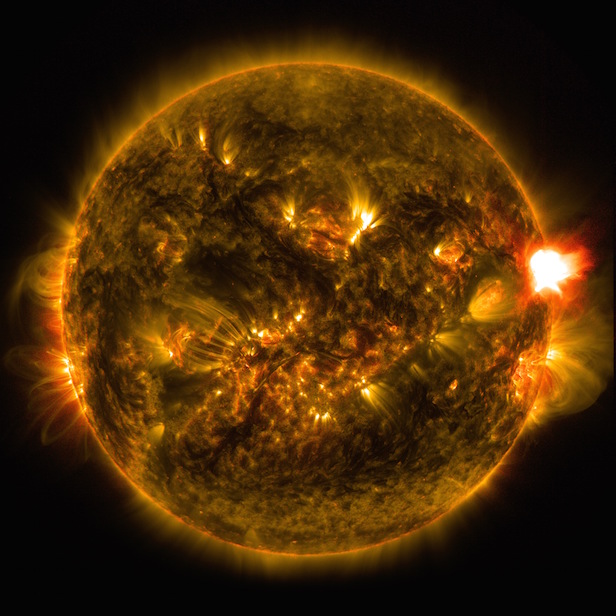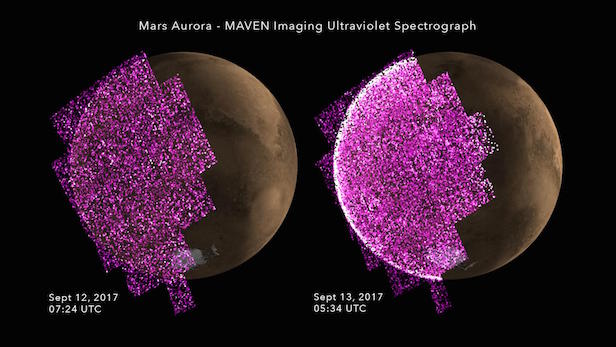Solar storm floods the Martian surface in radiation
Intense solar activity has sparked the fiercest aurora and radiation reading ever recorded on Mars

The Sun is supposedly in its quiet period of the eleven-year sunspot and storm cycle. Image credit: NASA/SDO
The unusually aggressive nature of Sun continues to surprise scientists as an unexpectedly intense solar wave hit Mars and was detected by all of NASA’s Martian missions. This strong blast was detected by all of NASA’s orbiters and ground-based missions at Mars on 11 September 2017.
This solar activity caused a global aurora at Mars, which was seen by NASA’s Mars Atmosphere and Volatile Evolution (MAVEN) mission. This aurora was more than 25 times brighter than any previous activity recorded by MAVEN since 2014. MAVEN wasn’t the only mission to witness this, as NASA’s Curiosity rover witnessed the event using its Radiation Assessment Detector (RAD). The radiation levels on the surface at the time of the aurora were more than double anything previously measured since 2012. These severe readings even lasted for more than two days.
This was an extremely unexpected event for astronomers, as the Sun has supposed entered the ‘quiet’ period of its eleven-year cycle for sunspots and solar storms.

MAVEN captured the global aurora on Mars, and the purple-white scheme illustrates the increased intensity due to the solar storm. Image credit: NASA/University of Colorado.
“The current solar cycle has been an odd one, with less activity than usual during the peak, and now we have this large event as we’re approaching solar minimum,” said Sonal Jain of the University of Colorado Boulder’s Laboratory for Atmospheric and Space Physics, who is a member of MAVEN’s Imaging Ultraviolet Spectrograph instrument team.
A key objective of the Curiosity mission is to understand how the radiation impacts the Red Planet’s habitability. With this information, we get closer to understanding the safety, and hazards, of a human-crew mission on the surface. As Mars has a small-scale atmosphere, highly energetic solar events can easily reach the Martian surface, thus interacting the atmosphere and creating potentially harmful secondary particles.
“If you were outdoors on a Mars walk and learned that an event like this was imminent, you would definitely want to take shelter, just as you would if you were on a space walk outside the International Space Station,” said RAD Principal Investigator Don Hassler of the Southwest Research Institute’s Boulder, Colorado. “To protect our astronauts on Mars in the future, we need to continue to provide this type of space weather monitoring there.”
Keep up to date with the latest reviews in All About Space – available every month for just £4.99. Alternatively you can subscribe here for a fraction of the price!




